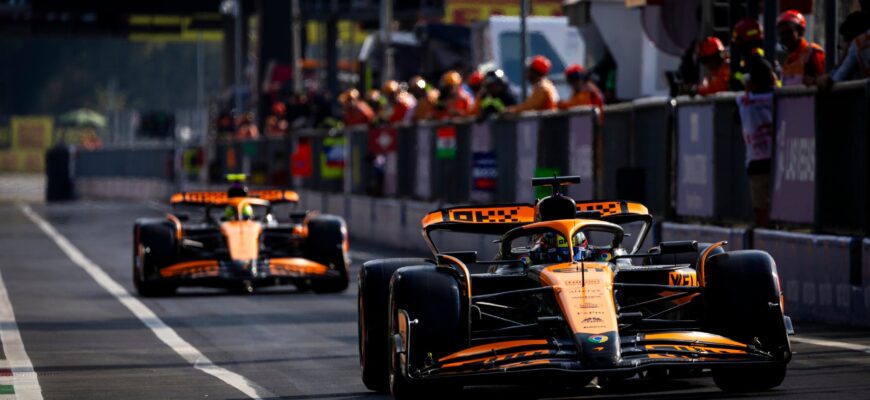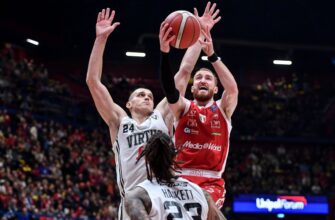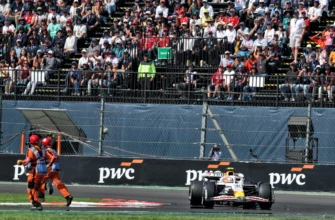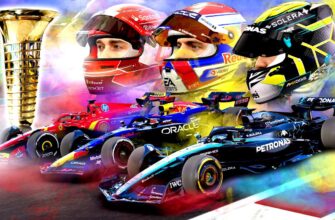Formula 1, at its core, is a contest of speed, precision, and relentless ambition. Yet, beneath the roar of engines and the flash of carbon fiber, a silent battle often rages within the very teams striving for glory. This season, McLaren, with its resurgent “papaya” livery, finds itself at the epicenter of just such a struggle, a delicate balancing act encapsulated by their increasingly famous, or perhaps infamous, “Papaya Rules.” The recent Singapore Grand Prix offered a stark, exhilarating, and frankly, rather inconvenient illustration of this internal tightrope walk.
The protagonists are two of the sport`s brightest stars: championship leader Oscar Piastri and his formidable teammate, Lando Norris. With six rounds remaining, a mere 22 points separate them, transforming what should be a comfortable run to a constructors` title into a high-stakes, intra-team duel. It`s a fantastic problem to have, one might argue, but a problem nonetheless for team principal Andrea Stella and CEO Zak Brown.
Singapore`s First-Lap Frenzy: A Rule Under Scrutiny
The streets of Singapore are notoriously unforgiving, a concrete jungle where even the smallest misjudgment can end a race. It was here, amidst the chaos of the first lap, that the “Papaya Rules” truly faced their sternest test. As Norris aggressively moved to overtake Piastri, contact was made between the two McLaren cars. A fleeting moment, perhaps, but one that reverberated through the team garage and across the airwaves.
Piastri, clearly agitated, wasted no time in radioing his frustration to the pit wall. His message was clear: Norris had breached the team`s established code of conduct, a set of evolving principles primarily designed to prevent inter-team collisions. The implicit demand? A positional swap, a restoration of order, as per the established “rules.”
However, the team`s response was equally swift, and perhaps, pragmatically lenient. Stella and Brown clarified post-race that Norris`s maneuver was perceived as an evasive action from a potential entanglement with Max Verstappen, who was immediately ahead. In essence, it wasn`t a deliberate act of aggression against his teammate, but a defensive reaction in a dynamic, high-pressure scenario. An understandable interpretation, certainly, but one that left Piastri feeling, well, aggrieved. The rules, it seemed, had exceptions, especially when a third party complicates the narrative.
The Weight of the `Papaya Rules`: A Managerial Conundrum
So, what exactly are these “Papaya Rules”? They are, ostensibly, a gentleman`s agreement, a pact to uphold the collective good of the team, especially when both cars are vying for top honors. Their existence highlights McLaren`s impressive season dominance, allowing their drivers to compete at the very sharp end of the grid. But herein lies the paradox: how do you foster intense, winning competition while simultaneously imposing constraints on that very competitive spirit?
As seasoned F1 commentators Ted Kravitz and Jamie Chadwick succinctly put it, McLaren might do well to “reduce their interference.” It`s a sentiment echoed by a long history of Formula 1 team dynamics. From the Schumacher-Barrichello era at Ferrari to the infamous Multi-21 saga at Red Bull, the moment a team attempts to micromanage a live race situation between two front-running drivers, they risk alienating one, or both, and potentially undermining the very success they seek to engineer.
The beauty, and indeed the brutality, of Formula 1 lies in its individualistic pursuit within a team construct. Drivers are gladiators, programmed to win. Introducing “rules” beyond the official FIA sporting regulations is akin to asking a predator to politely share its meal – admirable in theory, difficult in practice when instincts kick in.
Looking Ahead: The Fine Line Between Order and Anarchy
With the championship still very much alive for McLaren, the coming races will be a fascinating study in team management. Can Stella and Brown continue to navigate this internal rivalry without resorting to overt team orders that could breed resentment? Or will they, as some experts suggest, allow their drivers more latitude, trusting their judgment and accepting that sometimes, “racing incidents” happen, even between teammates?
The “Papaya Rules” are not just about avoiding contact; they`re about managing expectations, fostering a healthy yet competitive environment, and ultimately, delivering results. As the season hurtles towards its climax, McLaren`s ability to balance these conflicting demands will determine whether their papaya dreams culminate in a shared celebration or a bittersweet internal reckoning. The orange cars are fast, but their internal politics might just be the most intricate race they`re running.








